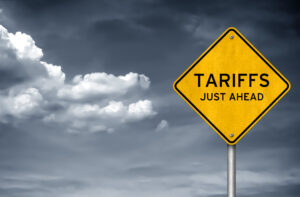Trump’s Tariffs: Who is Really Paying Them?
Trump’s Tariffs: Who is Really Paying Them? By Maya Notch
 President Trump invoked the International Emergency Economic Powers Act (IEEPA) to impose an additional 25% tariff on imports from Canada and Mexico and a 10% tariff on imports from China. These measures aim to hold these countries accountable for commitments related to halting illegal immigration and curbing the flow of fentanyl and other dangerous drugs into the United States.
President Trump invoked the International Emergency Economic Powers Act (IEEPA) to impose an additional 25% tariff on imports from Canada and Mexico and a 10% tariff on imports from China. These measures aim to hold these countries accountable for commitments related to halting illegal immigration and curbing the flow of fentanyl and other dangerous drugs into the United States.
Initially, the tariffs on Mexico and Canada were put on hold after their leaders took steps to address Trump’s concerns about border security and drug trafficking. However, the President has given mixed signals about when the tariffs might actually take effect. Just two days after announcing that the 25% tariffs would begin on March 4th, he stated in a cabinet meeting, “April 2nd…for everything.” This inconsistency has created uncertainty, leaving businesses unsure about what to expect.
Companies across various industries are bracing for the potential impact on their bottom lines and customers. Executives from sectors including publishing, medical devices, audio equipment, and freight logistics are all reaching the same grim conclusion: Increased costs will inevitably be passed on to consumers.
China plays a crucial role as a major supplier of raw materials and manufacturing components, and shifting supply chains or relocating production from there isn’t a simple solution. Although other countries are improving their production capabilities, they still lag behind China in technology, stability, and quality. Moving production domestically is also challenging due to labor shortages and limited capacity.
The situation is further complicated by potential retaliatory tariffs from key trading partners like Canada. In some cases, these tariffs make it more cost-effective for companies to bypass the U.S. market entirely when shipping goods from China to countries like Canada. This would allow them to avoid tariffs on both imports and exports.
Trump’s tariffs, along with the threat of reciprocal tariffs from other nations, could have significant consequences for American consumers—even if they don’t realize it yet. If implemented, these tariffs will likely make everyday goods more expensive. From clothing to electronics, consumers could face higher prices across the board. As uncertainty looms, the question remains: are these tariffs truly making America more affordable?
About the Author
Maya Notch is a Syracuse University senior majoring in Supply Chain Management and Business Analytics with a minor in Anthropology. She represents the Whitman School of Management through various leadership roles and is an active member of Delta Sigma Pi, a professional business fraternity. Additionally, she served as the Fundraising and Donations Coordinator for the Kenya Cultural Immersion Trip, which allowed her to learn more about global business and culture.
Outside academics, Maya gained practical experience as a Procurement Intern at Best Buy, where she worked on contract management, sourcing strategies, and vendor relationship management. She enjoys spending time outdoors, reading, and cooking in her free time.



